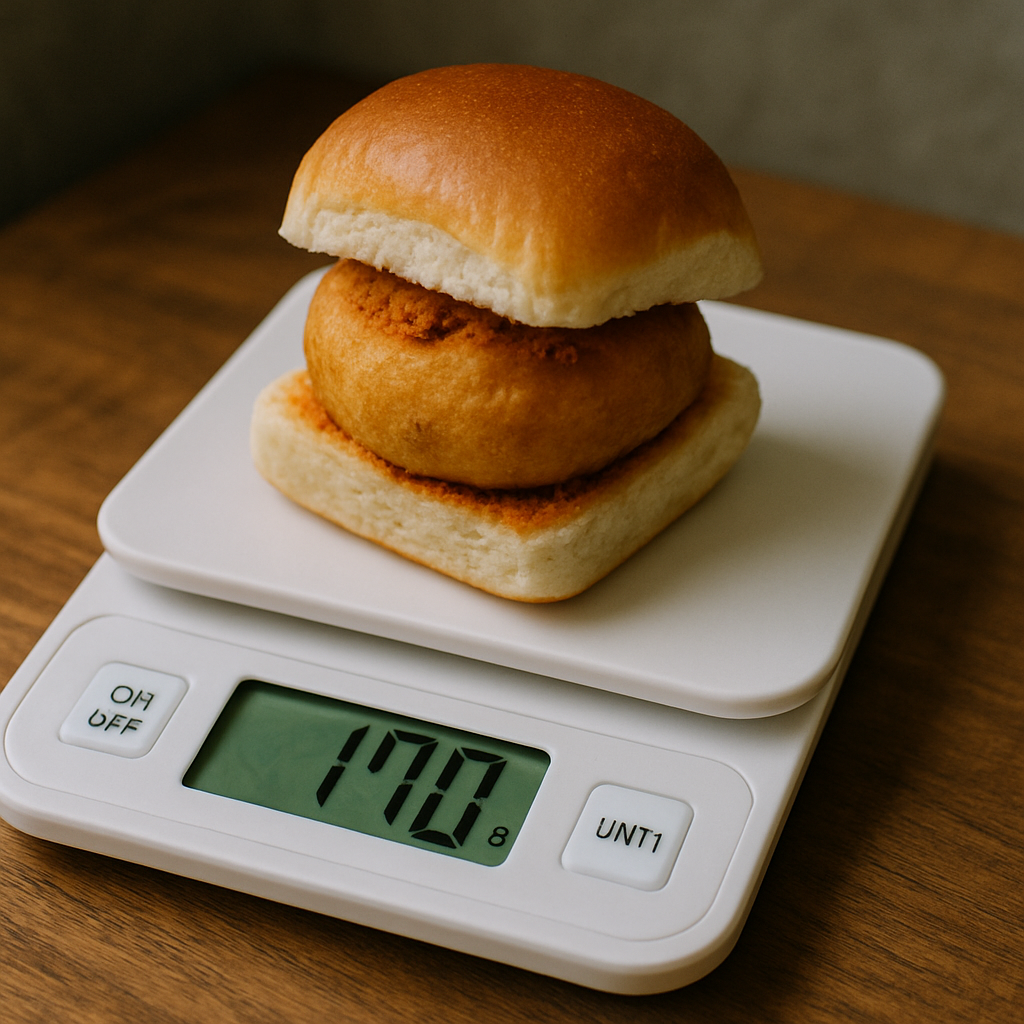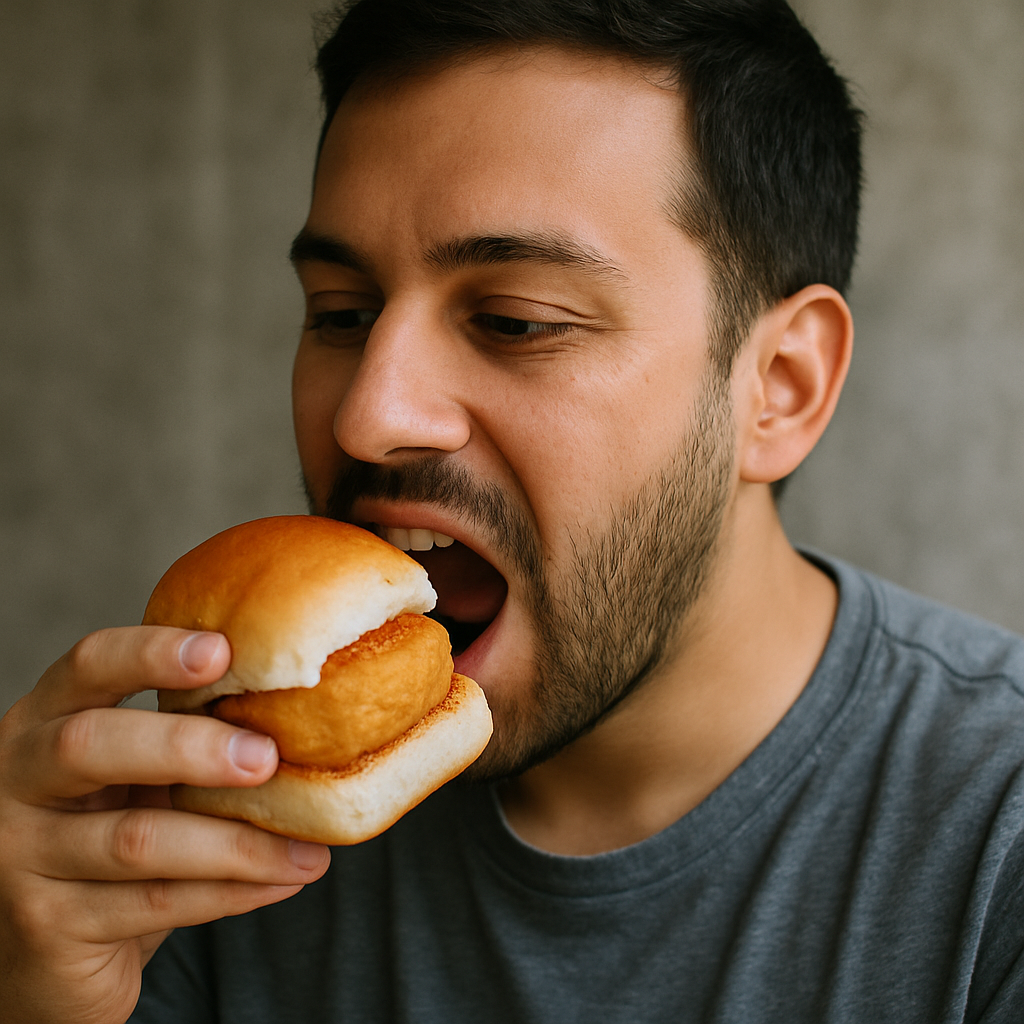Ask Ayurvedic doctor a question and get a consultation online on the problem of your concern in a free or paid mode. More than 2,000 experienced doctors work and wait for your questions on our site and help users to solve their health problems every day.
Shop Now in Our Store
Is Vada Pav Healthy? Calories, Nutrition, and Better Alternatives

We all love street food, don't we? Especially in Mumbai, where vada pav rules the snacks scene like a king on a spicy, fried throne. But as tasty as it is, many health-conscious folks often find themselves wondering — is vada pav healthy? How many vada pav calories are we really eating with each bite? Is there even such a thing as a “healthier” vada pav?
These questions aren’t just for fitness freaks or calorie counters. They're for all of us who want to enjoy our favorite foods without totally wrecking our diets. With rising awareness about lifestyle diseases and obesity, more and more people are starting to ask: how many calories in vada pav — and is it worth the indulgence?
Well, let’s break it down together.
What Is Vada Pav and Why It’s Popular
Vada pav is more than a snack; it’s practically a cultural icon. Think of it as India’s answer to the burger, only spicier, messier, and with way more soul.
It consists of a deep-fried potato dumpling (called “vada”) stuffed inside a pav (a soft white bun), along with chutneys, fried green chillies, and sometimes even garlic powder for that extra punch. Sold at roadside stalls and eateries, vada pav is cheap, filling, and addictively flavorful.
No surprise it’s the go-to comfort food for college students, office-goers, and midnight munchers across Maharashtra. But with that comfort comes a question: just how many calories in one vada pav are we signing up for?
Vada Pav Calories and Nutritional Breakdown
The nutritional profile of vada pav can be a bit shocking — especially if you thought potatoes and bread were "harmless." While they're both fine on their own in moderation, the deep frying and carb load change the game.
1 Vada Pav Calories: What You’re Really Eating
So, 1 vada pav calories — let’s get into it.
On average, one standard-sized vada pav contains between 280 to 350 calories. But that number can shoot up depending on how it’s made. If the vendor adds extra oil, butter-toasted the bun, or gives you double chutney? You're looking at 400+ calories.
Here’s a rough breakdown:
-
Potato vada (fried): 180–220 calories
-
Pav (1 piece): 120–150 calories
-
Chutney, oil, extras: 30–50 calories
This doesn’t even account for that spicy fried green chilli on the side, which, while small, adds some extra fat content.
So if you’re snacking on two of these? Yeah, that’s basically a full meal’s worth of vada pav calories.
Calories in One Vada Pav vs Samosa Pav
Let’s say you’re trying to make a "lesser evil" choice — vada pav vs samosa pav. Is one better than the other?
-
Calories in vada pav: 300–350 (as noted above)
-
Samosa pav calories: Typically 330–390 calories
A samosa tends to have more oil and refined flour (maida), which often gives it a slightly higher calorie count. However, both are similar in the sense that they’re heavy, deep-fried carb bombs. And neither is particularly high in protein or fiber.
That said, the samosa sometimes contains peas and spices that might add a tiny bit more nutritional value. But honestly? They’re neck-and-neck in the “treat, don’t eat daily” category.

Is Pav Good for Health? Ayurveda’s Take
Let’s talk about the bun — the humble pav.
It’s soft, fluffy, and the perfect vehicle for that spicy vada, but... is pav good for health? That depends on a few things. Most pavs sold in India are made with refined wheat flour (maida), which is low in fiber and lacks essential nutrients. It digests quickly, spikes your blood sugar, and leaves you hungry again in, like, an hour.
From an Ayurvedic perspective, maida is considered tamasic — meaning it can make the body feel dull and sluggish when eaten in excess. It has little prana (life force), which is why it's not exactly the food of yogis or health gurus.
Now, eating one pav here and there isn't gonna ruin your health. But if you’re munching on vada pav daily? You might wanna hit pause.
If you really need your fix, look out for pav made with whole wheat flour or multigrain options. They're not common on street carts, but at home or in cafes — they’re slowly becoming a thing.
Vada Pav vs Burger: Which Is Healthier?
Time for a spicy debate: vada pav vs burger — which snack takes the health crown?
At first glance, they seem pretty similar:
-
Both are carb-heavy and loaded with fat
-
Both are wrapped in a soft bun
-
Both come hot, tempting, and ready to devour
-
Both are usually eaten with sauce, chutney, or some kind of tangy dip
But once you peel back the layers, the differences become clearer:
-
Calories:
-
Vada pav usually ranges from 300–350 calories
-
Burgers can vary more widely — from 250 to 450 calories, depending on ingredients
-
-
Protein:
-
Vada pav is pretty low in protein
-
Burgers often contain more — especially if they include chicken, paneer, or soy patties
-
-
Fiber:
-
Vada pav has little to no fiber (thanks to maida pav and fried potatoes)
-
Burgers can have more fiber if made with whole wheat buns and extra veggies
-
-
Fats:
-
Vada pav is deep fried, which means higher unhealthy fat content
-
Burgers vary — grilled ones are usually lower in fat, while fried or cheese-loaded ones shoot the fat way up
-
-
Customization:
-
Vada pav (especially from a street cart) offers limited tweaks
-
Burgers are easier to customize — you can add lettuce, tomatoes, switch buns, skip cheese, or go meatless
-
So, while vada pav definitely wins in terms of flavor nostalgia and desi vibes, the average burger has more room for healthy adjustments — if you’re mindful about how it’s made.
But hey, we’re not here to hate on your favs. Just helping you spot the better pick when you’re trying not to throw your diet off a cliff. 😅
And yeah... don’t get us started on those fast food paneer burgers — some of them pack over 550 calories each. Ouch.

Can Vada Pav Be Made Healthier at Home?
Short answer: Yes. Long answer: Heck yes, and it can still taste amazing.
Here are a few smart swaps to make your vada pav less of a diet disaster:
-
Bake the vada instead of deep frying — or air fry it. You’ll save tons of calories.
-
Use whole wheat or multigrain pav — more fiber = more full.
-
Add veggies — like grated carrots, onions, even spinach into the vada mix.
-
Reduce the chutney oil — or use homemade chutneys with less sugar and salt.
-
Portion control — because let’s be real, eating three is where things go sideways.
If you're asking is vada pav healthy when made at home with all those tweaks — well, it can definitely become healthier, if not completely guilt-free.
Still, moderation is key. It’s comfort food. It’s soul food. But it doesn’t have to be your daily lunch break companion. 😅
Conclusion
So, let’s circle back to our burning question: Is vada pav healthy?
The honest answer? Not really — at least not in the way most of us eat it.
A typical vada pav is high in refined carbs, deep-fried fats, and low in nutrients like protein or fiber. If you’re eating it once in a while, fine. But relying on it regularly for lunch, dinner, or those random 4 pm cravings? Not the best idea. You’re basically loading up on vada pav calories and very little else your body actually needs.
That being said, it’s not evil. It’s iconic, it’s delicious, and it’s got emotional value for a lot of us. Food is culture. But so is balance.
If you love it, learn to make it better at home. Swap out the maida pav. Bake instead of fry. Add veggies. Use less oil. That way, you still get the taste without destroying your diet — or your energy levels.
And remember, the same rules apply to samosa pav calories, burgers, bhajiyas, or any other fried fav — moderation is your best friend.
FAQs
Can I eat vada pav during weight-loss?
Technically, yes — but with limits.
If you’re tracking calories and manage to fit one vada pav into your daily intake, you can eat it. But is it the best choice during a weight-loss journey? Not really. The lack of protein and fiber means it won’t keep you full for long, and the high fat-carb combo might throw your energy levels off.
Try eating half, pair it with a salad, or go for a home-made version with better ingredients. Also, avoid pairing it with sugary tea or cold drinks (which is so tempting, we know!!).
What is a healthier alternative to vada pav?
Great question. If you want that comforting street food feel without all the empty calories, here are a few better picks:
-
Grilled vegetable or paneer sandwich (on whole wheat bread)
-
Homemade aloo tikki with sprouted buns
-
Stuffed multigrain roti rolls with veggies and lean protein
-
Upma or poha — light, filling, and way easier on the stomach
-
Chickpea chaat with lemon, coriander, and spices
You can also explore vada pav-inspired wraps using low-carb rotis or lettuce leaves. Sounds weird, but actually tastes great. Promise.
Final Thought
Street food is a joy, and life’s too short to never eat your favorite snacks. But understanding what you’re eating — like how many calories in vada pav, vada pav nutrition, and vada pav vs burger comparisons — helps you make better decisions. Small swaps, smart portions, and occasional indulgence? That’s the real recipe for long-term health.
If you found this guide helpful, share it with your vada pav-loving friends, or that one person in your group chat who still thinks samosa pav is "healthier." 😂
Stay curious. Stay balanced. And don’t forget to enjoy your food.
This article is checked by the current qualified Dr Sujal Patil and can be considered a reliable source of information for users of the site.

